Note: Jeannie's Kitchen now being published on Jeannieskitchen.me.
It's a hard job finding a perfect bran muffin, but my friends loved the ones I made recently for brunch and have put in a request for the recipe.
When placing bran muffins in baking history it's natural to think of them arriving with the whole food revolution in the 1970's because of their high fibre content. But the earliest recipe comes from an 1857 cook book published in Philadelphia, and was raised by yeast like the English muffin. In the 1920's Fannie Farmer of the Boston Cooking School introduced them as a quick bread option using baking soda as the rising agent. In the late 1930's baking powder was added to make them even lighter as we prefer them today.
Its name is thought to be derived from the low German muffen meaning "small cakes", but was first printed as Moofin...I kind of like Moofin.
Some of you may remember Manual Training while at primary school. The boys did woodwork and the girls cooking. I'm sure my sister Kerry would have preferred woodwork to cooking and some of the boys on the bus wished they could be taking home edible rewards for their work, but it was the 1960's so there was no choice in the matter. I remember the small basket I would take containing an enamel pie dish, and a crisp white apron and headgear sewn by my Mum (to the required pattern). It was here I was introduced to bran muffins and the family got to try plenty of them as I perfected my baking skills.

- These students are wearing the same pattern aprons and head gear as those we wore at Manual Cooking classes but ours were white cotton Students at Wellington East Girls' College, with cakes and tea that they have made in a Home Economics class. Negatives of the Evening Post newspaper. Ref: EP/1958/2761-F. Alexander Turnbull Library, Wellington, New Zealand. http://natlib.govt.nz/records/232563
I've been reacquainted with bran muffins at one of our cafes here in Auckland, the Foxtrot Parlour in Ponsonby Central. They do the best bran muffins and I have tried to recreate them using the recipe I discovered in a NZ Gardener publication. I have altered the recipe a little but recognise that Nana from Rangiora has given me a fine base recipe so I've kept true to the original recipe name.
Nana's Bran Muffins
Ingredients:
50g butter melted
1 heaped tbsp golden syrup
1 egg beaten
1 cup of kefir, buttermilk or milk
1-1 1/2 cups of grated apple (one large apple will produce this quantity)
Handful of preferred dried fruit. I use raisins mostly but have used chopped up dates, currants or cranberries.
As many chopped walnuts as you can spare - as little as 1/4 cup up to about a cup.
1 cup self raising flour
1 1/2 cups of bran flakes or oat bran
1/2 cup sugar (brown or white)
1/4 tsp salt
1 tsp ginger (we love ginger so I often put in 2 tsp)
1 tsp baking soda
Mix golden syrup into melted butter to make a liquid. Add grated apple immediately to this mix to prevent it from discolouring. Next add in extra dried fruit and chopped nuts, the milk or kefir and beaten egg to this mix.
Put all the dry ingredients together except for the baking soda.
Just before adding the dry and wet ingredients together, stir the baking soda into the liquid mix. You want the baking soda to start reacting but not to be completely spent.
Now gently fold the dry ingredients into the bowl of wet ingredients. It's important with muffins not to over mix as this makes them tough.
For those of you who are manufacturing your own kefir, I've found my muffins have improved since using it in the mix. They seem to be lighter and softer for some reason.
I spray or butter the muffin tins really well as the cooked muffins can be tricky to get out. Using a dessertspoon I spoon the mix into the patty pans nearly to the top but allow room for them to rise. If the mix is very moist and the pans are filled too high they are likely to spread over the top of the muffin tins rather than rising up to a mound...making them difficult to get out of the pans in one piece. Alternatively you can use paper or silicon cases, but I prefer the metal patty pans.
To add a little luxury I sometimes slice up some damson paste and pop into the top of the uncooked muffin mix so when you open up the muffin there is a little bit of softened jelly in the centre - yum. I have used quince paste the same way.
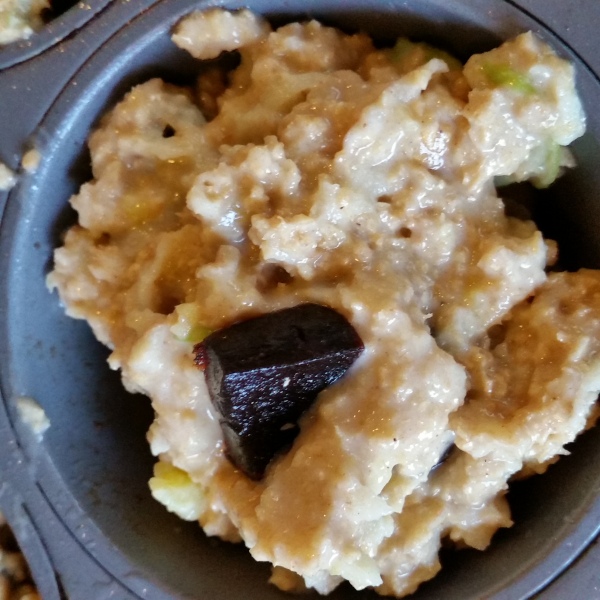
Bake for 12-15 minutes at 160C. Once cooked... leave to cool slightly, then run a knife around the edge of the muffin. Leave until cool enough to handle and then gently release them from the tins and put onto a wire rack to cool.
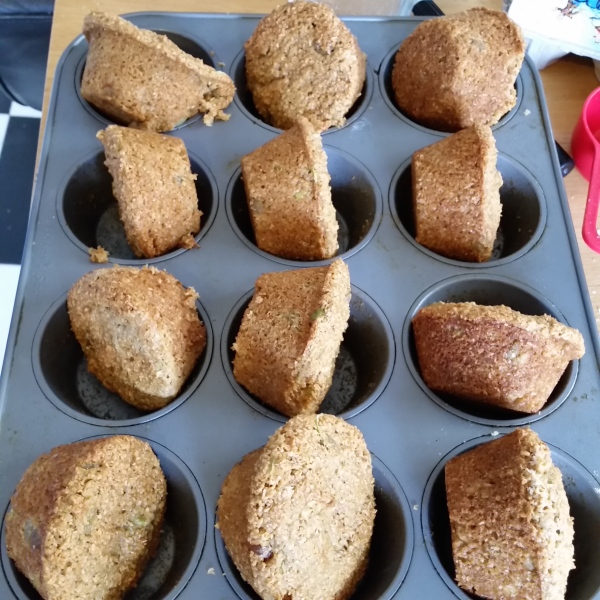
Usually the family is lining up to eat them while still hot. They freeze well for future use.
These muffins are moist so no butter is needed ...but butter is also nice. You can offer jelly or jam for those who like a sweeter taste but I prefer them as they are.
You can replace the apple with any other fruit or vegetable but I really like the apple. I usually vary them by the added fruit or nuts. Instead of paste you could pop in a slice of crystallised ginger. If available I use fresh, frozen or dried blackcurrants or blueberries.
I usually try to use oat bran rather than wheat bran because oat bran has more nutrients, but it's not so easy to find. Oat bran makes a lighter coloured muffin and a nuttier flavour. Always buy bran in small quantities because it can go rancid very quickly. An idea is to keep it in the freezer if not using regularly.
My latest find is dried Barberries which are the size of currants but have twice the zing and can be found in specialty stores. It's a product of Iran and could be under the name Zereshk. These little jewel like fruits were the something special I added to the muffins I served my friends at brunch.
The muffin was born in the USA and are taken seriously enough to be considered as state symbols. The corn muffin is the official state muffin of Massachusetts, the blueberry muffin of Minnesota, the apple muffin of New York and New England claims the bran muffin. The New England bran muffins tend to include molasses where my recipe has golden syrup. Treacle or molasses would add a deeper flavour but be careful not to overdo the molasses and a good compliment to molasses or treacle would be ginger.
I have always preferred the bran muffin to the cakey muffin that is offered in a lot of cafes. I believed bran muffins must be a healthy option with all that bran.
But then I read Sally Fallon's "Nourishing Traditions". It's true bran as the outer coating of a grain contains most of the nutrients and fibre. But it also contains phytic acid (an organic acid in which phosphorus is bound). Untreated phytic acid can combine with calcium, magnesium, copper, iron and especially zinc in the intestinal tract and block their absorption which could lead to mineral deficiencies and bone loss. Ironically all that roughage could result in irritable bowel syndrome long term.
Sounds terrible doesn't it? But this is unlikely to happen if you consume the odd bran muffin... you would need to be having a high bran diet and eating bran muffins every day.
Most grains (including gluten free grains like Quinoa) have phytic acid and it's useful to know that this acid can be neutralised or treated by simply soaking the bran for 7 hours in warm water to break down the phytic acid before digesting the grain or bran. By adding a little whey, kefir or a squeeze of lemon juice will ensure an ideal environment for enzymes, lactobacilli and other helpful organisms to live in. Another benefit of soaking grains is that various vitamins will become available when we digest the grains that wouldn't have been otherwise. For an easy improvement to your porridge visit my post of September 2013 A Big Soak.
I have attempted making these muffins by pre soaking the bran but they tend come out heavy. I will keep experimenting and if I'm successful in making a soaked bran muffin closer to what this recipe delivers I'll let you know.
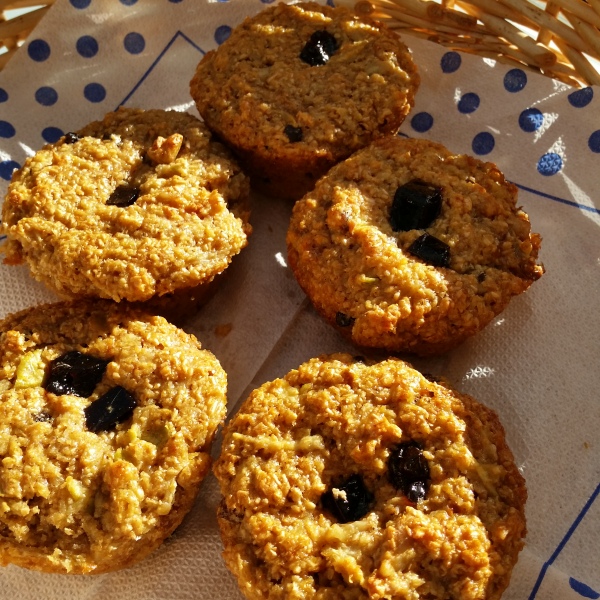
In the meantime, just as our family does, enjoy these delicious moofins every now and then.

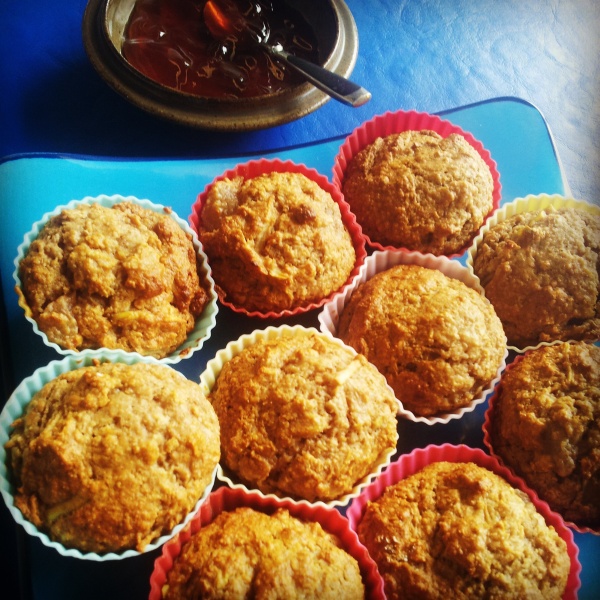
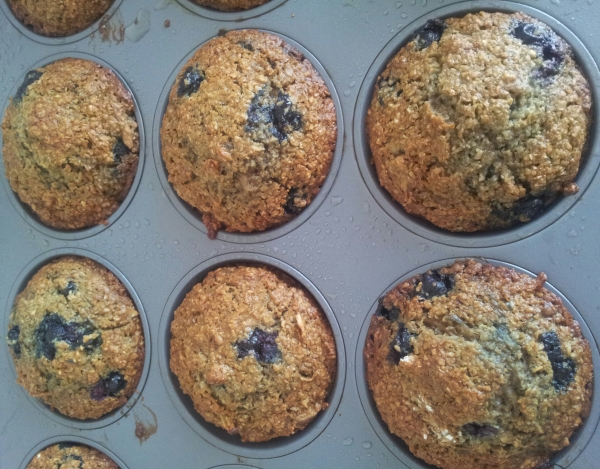
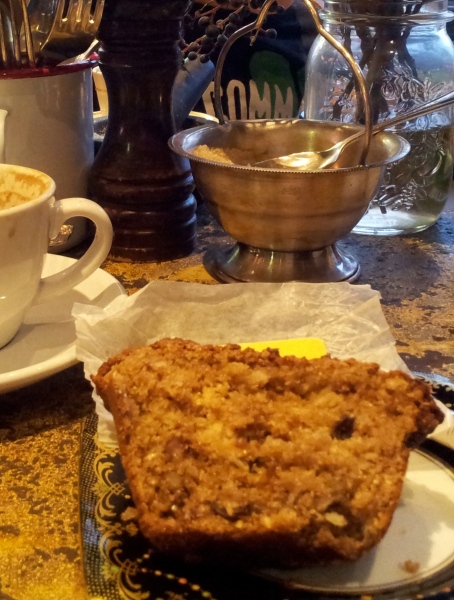
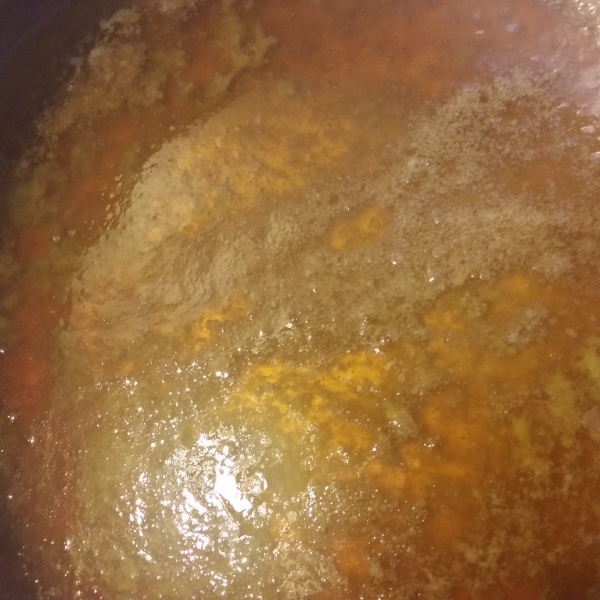
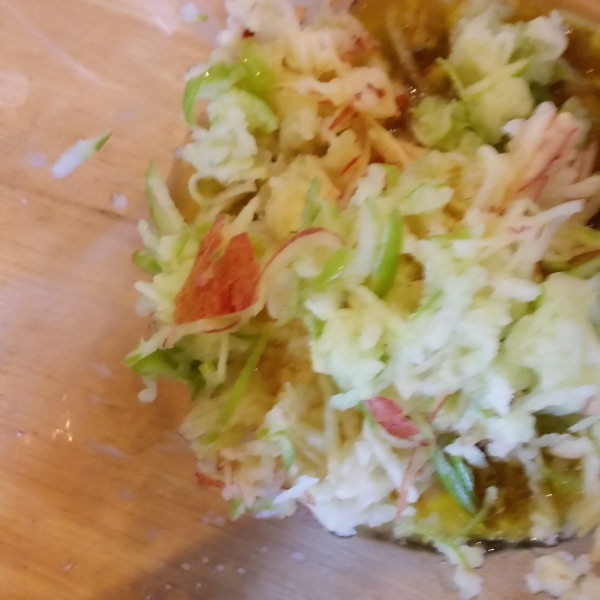
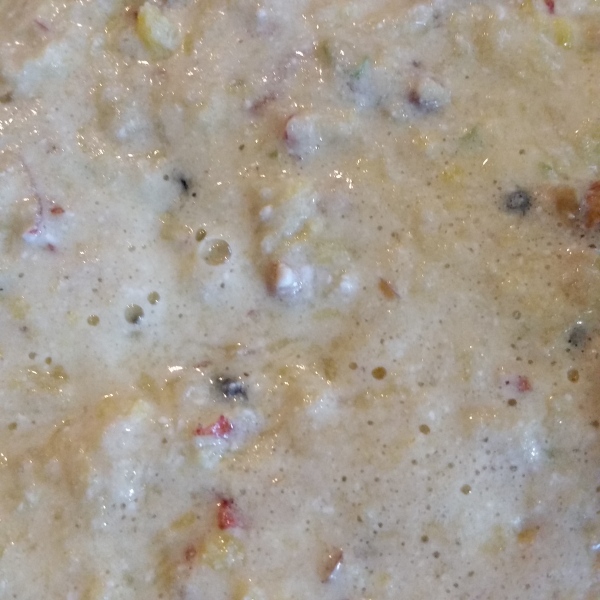
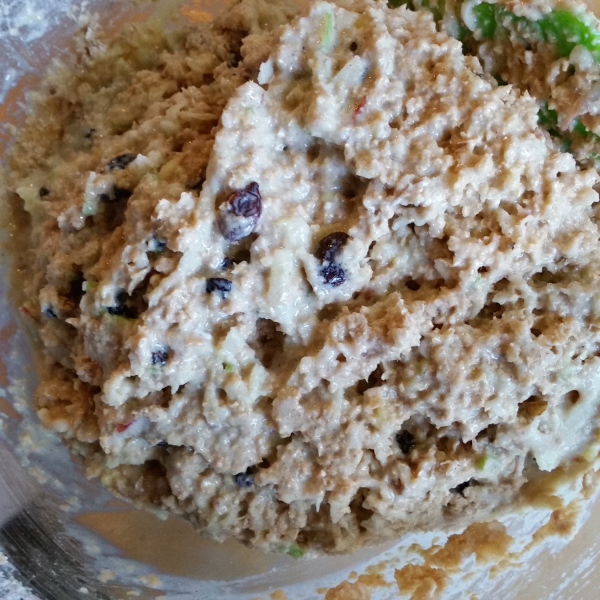
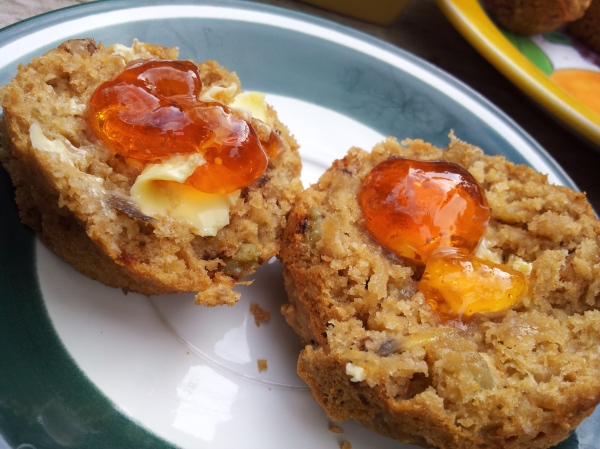

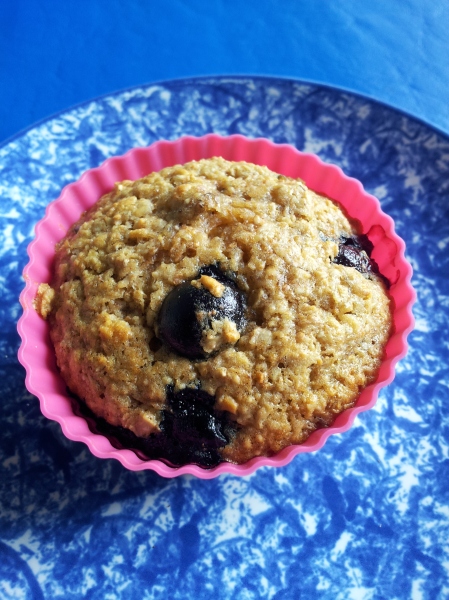
No comments:
Post a Comment
Would like to see your comments or share some of your favourite recipes.